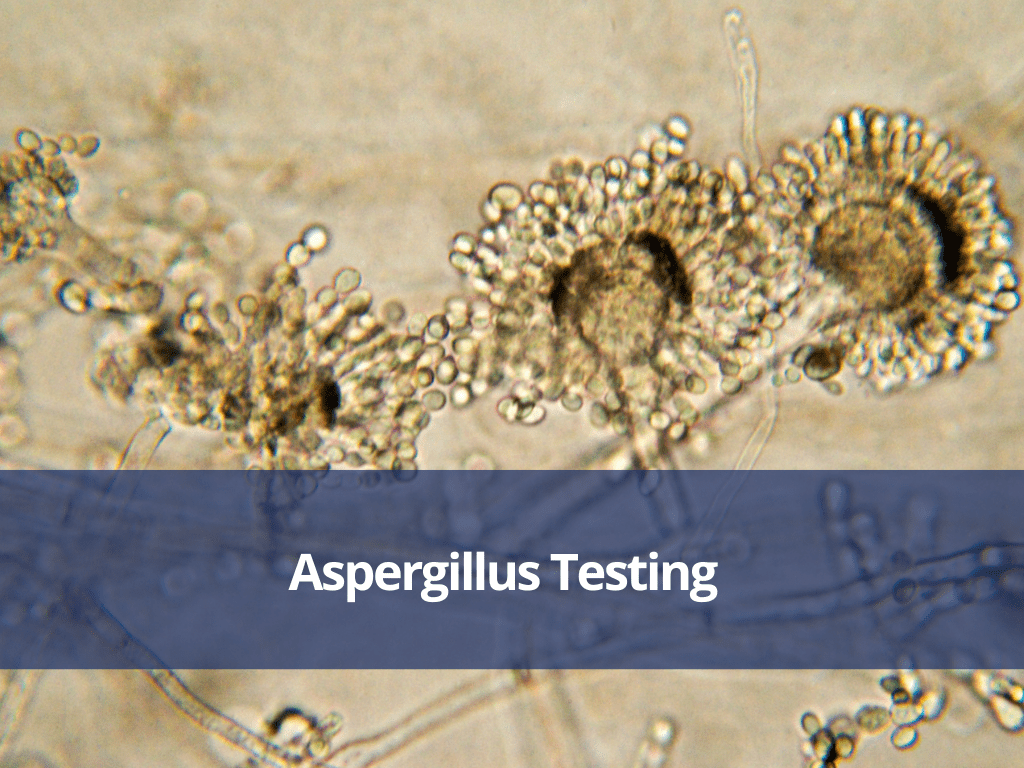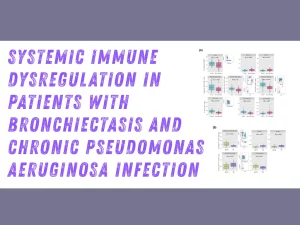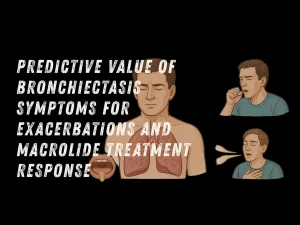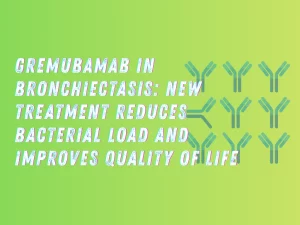Aspergillus Testing and Disease Outcomes in Bronchiectasis: Data From the EMBARC Registry

Aspergillus Testing and Disease Outcomes in Bronchiectasis. Rationale:
Allergic bronchopulmonary aspergillosis (ABPA) is a known cause and consequence of bronchiectasis, but the clinical significance of ABPA and other Aspergillus-associated airway disorders, including Aspergillus sensitization (AS) and Aspergillus bronchitis (AB), in bronchiectasis is unclear.
Our limited knowledge stems from an apparent lack of largescale ABPA testing, despite ERS recommendations, and a lack of universally accepted diagnostic criteria forABPA.
This study aimed to investigate the incidence of ABPA testing across Europe and investigate the clinical significance of Aspergillus disease in bronchiectasis while comparingexisting and modified ABPA diagnostic criteria.
Methods:
Bronchiectasis patients with serological testing for Aspergillus disease enrolled into the EMBARC registry from 2015-2022 were included.
ABPA was defined using Modified-ISHAM criteria (2021) with sensitivity analysisconducted using ISHAM-ABPA criteria (2013).
Elevated Aspergillus-specific IgE/positive Aspergillus skin test without ABPA was deemed ‘AS’.
Those with elevated Aspergillus-specific IgG without ABPA acted as surrogate for AB. Patients not meeting criteria formed the control group.
Exacerbations during annual follow-up were analysed using negative binomial modelling andsurvival analysis was performed using Cox proportional hazards regression with adjustment forrelevant confounders.
Results:
18,792 patients were included. Of these patients, 9953 (53%) received serological testing for ABPA.
ABPA testing varied greatly across Europe, with the lowesttesting rates occurring in South-Eastern Europe (<7% patients receiving ABPA testing).
Of those tested, according to the Modified-ISHAM criteria (2021), 608 (6.1%) had ABPA, 570 (5.7%) showed AS, 806 (8.1%) had raised Aspergillus-specific IgG, 184 (1.8%) showed both AS andraised Aspergillus-specific IgG and 619 (6.2%) had elevated eosinophil counts without Aspergillusdisease.
78 ABPA diagnoses were mis-diagnosed using the original ISHAM-ABPA criteria (2013).
All Aspergillus disease groups showed increased severity and worse lung function at baseline.
Long-term follow-up revealed raised Aspergillus-specific IgG as a risk factor for exacerbations and hospitalisations, while atrend towards increased mortality was observed in those with ABPA. Inhaled corticosteroids modified hospitalisation risk associated with AS and raised Aspergillus-specific IgG,
Conclusions:
Marked differences in peripheral blood immune cell gene expression were observed between bronchiectasis patients and healthycontrols.
Transcriptomic changes were associated with disease severity and airway inflammation identifying potential novel biomarkers and therapeutic targets ABPAtesting varies greatly across Europe despite ERS recommendations.
Aspergillus disease is common in bronchiectasis and associates with worsened disease severity and outcomes whichcan be modified by ICS.
The Modified-ISHAM criteria (2021) captured ABPA diagnoses missedusing ISHAM-ABPA criteria (2013).
This abstract is funded by: This work was supported by the Innovative Medicines Initiative (IMI) andEFPIA companies under the European Commission funded project, iABC (grant 115721) and bythe European Respiratory Society through the EMBARC3 consortium.
EMBARC3 is supported byproject partners Armata, AstraZeneca, Boehringer-Ingelheim, Chiesi, CSL Behring, Grifols, Insmed,Janssen, LifeArc and Zambon.
Authors:
J. Pollock, P. C. Goeminne, S. Aliberti, E. Polverino, M. L. Crichton, F. Ringshausen, R.Dhar, M. Vendrell, P. Burge, C. Haworth, A. De Soyza10, De Gracia, A. Bossios, J.Rademacher, A. Gruenewaldt, M. J. Mcdonnell, D. Stolz, O. Sibila, M. van der Eerden, P.Kauppi, A. T. Hill, R. Wilson, M. Redondo, O. Munteanu, R. Menendez, A. Torress, T.Welte, F. Blasi, W. Boersma, J. Elborn, M. Shteinberg, K. Dimakou, A. Shoemark, J. D.Chalmers1, M. R. Loebinger.
Read more details at
Noticias relacionadas

Systemic Immune Dysregulation in Patients With Bronchiectasis and Chronic Pseudomonas aeruginosa Infection
Study reveals systemic immune alterations in bronchiectasis patients with chronic Pseudomonas infection, highlighting persistent immune imbalance.

Symptoms, risk of future exacerbations, and response to long-term macrolide treatment in bronchiectasis: an observational study
Observational study shows bronchiectasis symptoms independently predict exacerbations and identify patients who benefit from macrolide therapy, even with few prior episodes.

A Bispecific Monoclonal Antibody Targeting Psl and PcrV for Chronic Pseudomonas Aeruginosa Infection in Patients With Bronchiectasis: Results From a Randomized, Double-Blind Placebo-Controlled Trial (GREAT-2)
The GREAT-2 trial shows that gremubamab significantly reduces Pseudomonas aeruginosa load and enhances quality of life in bronchiectasis patients. Discover the results now.
Artículos
Infección bronquial
- 769799·Alvar Agusti, Peter G. Gibson, Vanessa M. McDonald. Treatable Traits in Airway Disease: From Theory to Practice
- 779185·Vincent Cottin et Al. Syndrome of Combined Pulmonary Fibrosis and Emphysema. An Official ATS/ERS/JRS/ALAT Research Statement.
- 779199· Bartolome Celli et al. Definition and Nomenclature of Chronic Obstructive Pulmonary Disease: Time for Its Revision
- 779394·Martínez-García M, Faner R, Oscullo G, la Rosa-Carrillo D, Soler-Cataluña JJ, Ballester M, et al. Chronic Bronchial Infection Is Associated with More Rapid Lung Function Decline in Chronic Obstructive Pulmonary Disease. Ann Am Thorac Soc. 2022
- 789482·Martinez-Garcia, M.Á., et al., Chronic bronchial infection and incident cardiovascular events in chronic obstructive pulmonary disease patients: A long-term observational study. Respirology, 2021. 26(8): p. 776-785
Ensayos
- 769685·Nuria Olvera et Al.- Lung Tissue Multi-Layer Network Analysis Uncovers the Molecular Heterogeneity of COPD
- 779885·Ana Rodrigo-T,Jordi Giner,Lidia Perea,Jose Luis Merino,Núria Albacar,Belén Solarat,Diego Castillo,Rosa Faner,Alvar Agustí,Oriol Sibila. Predicting Early Hospital Readmissions in COPD Patients Using an Electronic Nose | Archivos de Bronconeumología
- 788772·Alvar Agustí et al. Add-on inhaled budesonide in the treatment of hospitalised patients with COVID-19: a randomised clinical trial
Imagen obtenida en Canva Pro.
